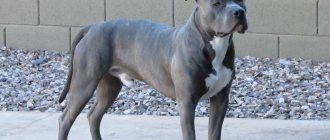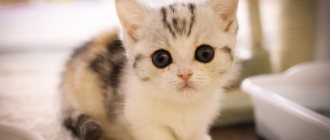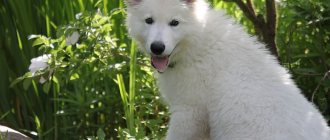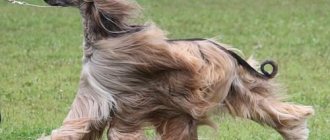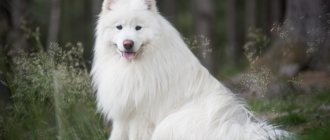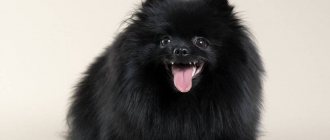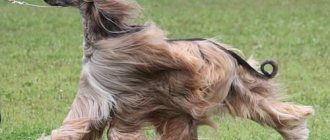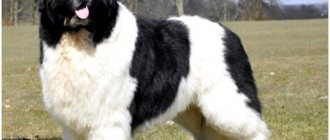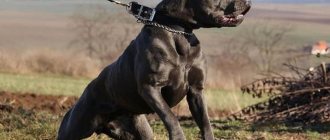Nature has endowed cats with a huge variety of colors. Against the backdrop of a wide color palette, contrasting black and white stands out. It is considered one of the most common and gives animals a special charm and nobility.
Let's figure out which cat breeds are characterized by black and white coloring.
Features of black and white color
Cats with contrasting colors are not very rare and are widespread throughout the globe. Despite its apparent simplicity, the combination of white and black has several important features:
- Uniqueness. This coloring is purely individual, so it is almost impossible to find two black and white cats with identically located spots and stains.
- Spread of color to the paws. A black and white cat may have two-color pads. Their skin is partly dark and partly pink.
- Unusual eyes. Many black and white cats have green tinted irises. Also among them are individuals with heterochromia.
- Dominance of one of the colors. Black and white cats cannot have a uniform color - one color will definitely predominate.
Interesting! In the USA, the black and white color is called “tuxedo”. Americans probably associate it with a classic men's suit, worn with a light shirt. Initially, the phrase “tuxedo color” meant an almost entirely black cat with a white mustache, “slippers” and chest.
Interesting Facts
There are several interesting facts about black kittens with white paws and spots on their bodies. For example, the two-color color of cats was considered a defect for a long time, and only at the end of 1969 were they allowed to participate in exhibitions.
These animals are independent and self-sufficient, thanks to which they are able to survive without outside help. They are resistant to stressful situations and are never the first to show aggression. These animals love people and calmly get along with them under the same roof.
Black and white cats are unusually beautiful pets that are distinguished by their attractive two-tone color. People who want to get such pets should familiarize themselves with their main features and breeds in advance.
Varieties of color
Although all black and white cats appear identical, this is absolutely not the case. There are 3 main varieties of this color:
Wang
With this color, the body of a black and white cat is covered with light hair with several small charcoal marks on the head, muzzle and near the tail of the animal.
Harlequin
Black and white cats with this coloration have light fur with numerous large dark markings. The charcoal pattern can combine stripes, small patterns and large areas of dark fur. The main thing is that the black spot is uniformly colored and does not have white hairs.
Bicolor
The body of an animal with this coloring is covered with blue-black fur with snow-white spots of different shapes and sizes. In the classic version, a bicolor cat has a “tie” in the chest area, as well as light markings on the sides, face and head.
The influence of coloring on character
Albino white giant rabbit: description of the breed
The character of cats that are painted black and white has the following features:
- Sustainability. Even in stressful situations, they behave calmly and do not show aggression.
- Sensuality. Pets with two-colored coats are very sensitive and always understand when to support their owner and be close to him.
- Obedience. Such animals are very obedient and smart, they easily make contact.
Additional Information! Cats first of all think not about themselves, but about their owner. For them, satisfying their own needs does not come first.
Color ratio
According to another, more detailed classification, black and white (b/w) color is divided into several types:
- coal-black background without clear light areas with unevenly interspersed white hairs;
- with a charcoal background and small white areas in the neck, chest or lower limbs;
- with a large, clearly defined white patch of fur on the cat's throat;
- with a mark that flows from the chin to the neck of the animal;
- with a uniform light area that starts from the chin and covers the chest, abdomen and all four limbs;
- with white bottom and sides, as well as large black markings on the back, back of the head and tail of the cat;
- with a charcoal tail and small black spots on the back;
- residual black - with several small dark markings on head and tail;
- dominant white - black pigment is present exclusively at the gene level.
Turkish Angora
The elegant, long-haired Turkish Angora was once associated only with white skin color. They are still most often found in this color and come in many other variations, including black and white.
Turkish Angoras are generally best suited to family homes, where they spend most of the day. Sociable and affectionate, they need a lot of attention and enrichment.
They are more active than regular cats and can become mischievous if they get bored. Unlike most cats, this breed often loves to swim and play in the water.
Breeding Features
Getting black and white kittens with the “correct” colors in any breed is very difficult. The difficulties are caused by the fact that in the bicolor color the spots must have beautiful clear outlines and not merge with each other, and the back is darkly pigmented. In addition, black and white cats with symmetrical markings are of particular value. But due to the fact that the localization of spots cannot be predicted in advance, such animals are born very rarely and are more expensive than others.
Black and white kittens arise from the mating of two-colored individuals or a bicolor cat and a cat with a tortoiseshell coat color. Moreover, the shade of the offspring’s fur coat depends on the combination of genes of the parents.
Foreign white
This breed is the result of the painstaking work of its creators, whose goal was to obtain a Siamese cat of a snow-white color, without the presence of additional shades. Translated from English, the name of the cat sounds like “white foreigner.” She was officially registered as a representative of an independent breed in the second half of the last century. Another name for foreign white sounds like Chinese white. The main feature of the breed is that, despite its impeccable whiteness, all its representatives always have excellent hearing. Foreign White is a breed endowed with a strong mind. She loves to be the center of attention, gets along well with children and pets, but is also quite independent. Loves walks - this cat can easily be trained to walk on a leash.
Breeds of black and white cats
For a long time, the black and white color remained unrecognized by felinological systems, and purebred cats with a similar color were mercilessly discarded. The situation changed in 1969, when animals with such coats first appeared at the exhibition. Now black and white cats are found in many breeds.
British
For a long period, only blue or smoky colors were cultivated in the breed. But with the popularization of the British, their color range expanded significantly.
In addition to the standard types - van, harlequin and bicolor - among the black and white cats of this breed there are individuals with the unrecognized mitted color. It requires the presence of a light stripe between the chin and groin.
Also, black and white cats of the British breed with a mitted color should have light “socks” or “socks” on their paws.
Oriental
The standard of this breed provides for more than 200 colors, including all black and white variants. Moreover, a van, bicolor and harlequin kitten can be born in one litter. There are many varieties of black and white cats in the breed.
Among the Orientals there are also charcoal individuals with light paws and markings on the face, and snow-white animals with small contrasting spots.
Canadian Sphynx
Bicolor cats are often found among cats of this breed. Moreover, a contrasting pigment colors the skin. Black and white cats of this breed often have a charcoal tail and at least one ear. Sphynx cats are also allowed a symmetrical dark marking on the top of their head.
Kurilian and Japanese bobtails
These tailless cats also have a black and white color, which is characterized by certain features. Bicolors must have a closed white collar on the neck and a light marking on the muzzle in the shape of an inverted V.
Harlequins should have charcoal spots on the forelegs, back and head. Black and white van bobtails have a dark tail and a completely light back.
Kurilian Bobtail
Japanese Bobtail
Maine Coon
These large cats can be black and white in color. Moreover, they are more characterized by the bicolor type, in which most of the body, including the muzzle and ears, is covered in charcoal color.
Among the black and white Maine Coon cats, there are almost no individuals with the “van” and “harlequin” colors, so the cost of such animals can reach several hundred thousand rubles.
Persian
The most common color found in black and white Persian cats is the “harlequin” color, in which 5/6 of the body surface is lightly pigmented. The rest of the body is covered in a rich, cool charcoal color.
For the Persian cat breed, dark whiskers and white hairs on black spots are unacceptable.
Siberian
In addition to the usual variegated colors, the breed allows more than a dozen different colors, including a black and white version. Moreover, a fluffy Siberian can have all three types with clearly defined spots that do not overlap with each other.
The eyes of a black and white cat of this breed are pigmented yellow or green.
Turkish Angora
Although many believe that the Angora is a pure white cat, it also has other color variations. The bicolor breed has light legs, chest, collar, muzzle and belly, as well as a white mark on the forehead that looks like an inverted V.
Manx and Cymric
Tailless cats have many color options, including black and white.
Manx
Cymric
Munchkin
These cute, short-legged cats can have black and white fur. Bicolor munchkins often have light markings on their faces, “socks” on their paws, a “collar” on their necks, and a “tie” on their chests.
Cornish Rex
This figurine-like curly cat also comes in black and white. Moreover, in addition to the three main color options, the breed allows the “tuxedo” color, in which the Cornish’s chest, paws and belly are light, and the top of the head, back, shoulders and sides are charcoal.
The iris of a Rex black and white cat can be blue, yellow, olive or copper.
Turkish van
From the name of the breed it is easy to guess which type of coloring is inherent in these cats. Black and white Turkish Vans have a light body with small dark markings on the head and a charcoal tail.
Manx cat
Like the Cornish Rex, the Manx is dog-like. They are usually playful, sociable, even-tempered and energetic. Manx cats are also intelligent and highly trainable.
This breed is usually tailless, but they sometimes have a short stump. They come in a variety of coat colors, including black and white. This short-haired variety can shed heavily, and with their rounded and shorter back, they may be more susceptible to spinal problems. These cats are also famous for their mousecatching skills.
Content
Keeping Russian cats is no different from proper care, but each breed has its own nuances. Some breeds require a predominance of certain nutrients in the diet, while others require rinsing when caring for their eyes. Fluffy and semi-long-haired animals require attention to their fur: combing and periodic water treatments. Individual animal care. It depends not only on the breed, but also on the following factors:
- age;
- sterilization/castration or lack thereof;
- past illnesses.
Nutrition
Meals must be regular and balanced; you cannot feed the animal exclusively with dry food. Food must be nutritious and energetically valuable. The diet should contain a lot of protein (found in meat and milk), 20% fat is allowed, and there should not be a lot of carbohydrates. The diet of spayed/neutered animals differs from the diet of ordinary cats. So, it must contain minerals and vitamins pre-selected by a veterinarian.
The diet should include the following components:
meat – rich in amino acids and nutrients; Do not eat fatty meats like pork;
fish – rich in phosphorus, calcium and protein;
dairy products should be given with caution, as some breeds are lactose intolerant; Cereal porridge mixed with vegetables will be useful; to keep the animal interested, you should mix in meat or fish.
Hygiene
Cats are excellent at maintaining personal hygiene, but some breeds require special care. Cats with longer hair require daily brushing and occasional bathing. The ears require attention: they should be periodically inspected and cleaned, and ear drops should be instilled to prevent mites and ear diseases. You should wash your eyes with a moistened cotton pad in the morning.
Pixie Bob - domestic lynx
Pixie Bob These spotted short-tailed cats, similar in appearance to a lynx, are very popular in America.
They are often mentioned in local legends. It is not surprising that many Americans consider this breed a national treasure. There are no special features in keeping a domestic lynx. Animals require regular brushing, cleaning of teeth, eyes and ears, and shortening of nails. Pixie-bob will not give his owner a concert while swimming. These animals do not suffer from hydrophobia. You can feed your unpretentious pet with ready-made premium or super-premium food or natural food, supplementing it with vitamin and mineral complexes approved by your veterinarian.
Representatives of this breed have good health. They have excellent heat transfer, allowing them to withstand cold and frost well. Sometimes pixie bob kittens are born with extra toes.
Plain (solid, solid)
The monochrome uniform coloring of Scottish cats is considered classic by breeders. The solid or solid color of the animal implies the absolute exclusion of any inclusions, small marks and specks of a different color. The tone is rich, even along the entire length of the coat.
The most common used to be considered blue plain Scots. But today among the representatives of the breed there are many other variants of solid colors.
White
A Scottish cat with snow-white fur (without yellowness) looks luxurious. Possible eye colors are blue, amber, copper. According to the standard, eyes of different colors are allowed. The paw pads and nose are light pink.
Kittens may have markings of a different shade, which disappear after the first coat change. By the age of two, the coat of a white Scot should be crystal clear, without spots of a different color.
Black
The black cat has expressive yellow eyes. The nose and paw pads practically blend into the main color of the animal.
On the shiny bright coat of the Scottish beauty Ebony, 2-3 hairs of contrasting white color are allowed. The presence of large red or brown marks is not provided for by the standard.
Chocolate
The brown Scottish cat, also called chocolate, looks noble and impressive. The color of the coat contrasts with the animal's yellow, golden or copper eyes. The nose and paw pads are also dark brown.
Lilac (lavender)
The monochromatic lilac Scottish Fold has a gentle gray tint that smoothly turns into cream. The nose is slightly brownish, the paws on the bottom are the same color as the coat, in harmony with the main color of the pet. This lilac-lavender color goes well with eyes of copper, amber or orange shades.
Red (red)
Red or ginger color is a rare and valuable color of the Scots breed. The fiery edge is combined with burning amber irises. Pads and nose to match the dominant color.
The tail of kittens and adult animals is not very evenly colored. This deficiency does not disappear with age and is allowed by the standard. And the presence of marks on the head and limbs that remain after reaching the age of two are considered a deviation from the norm.
A red Scottish straight-eared cat can give birth to kittens not only with erect ears, but also with ears pressed to the head.
Cream
The cream or peach fold cat is infinitely elegant and beautiful. The delicate background of light fur, bright golden eyes and a pinkish nose give the pet an irresistible appearance. The pads on the paws are also pink. An animal with this color is similar to a red Scotsman, but its coat color is a shade lighter.
A peach fold kitten may have a blurry, fuzzy pattern on its paws and tail that does not disappear with age. This is not critical for a purebred pet, but leopard markings are absolutely unacceptable.
Faun (deer)
There is another unique color of Scottish fold cats with an interesting name - fawn, which means “young deer”. The nose and pads on the paws of these beauties are beige-pink.
Cinnamon
Cinnamon is a lighter and more delicate color than chocolate, but darker than red. The nose and paw pads of such animals are brown, beige or pink.
Blue color (blue)
The gray or blue Scottish cat has very beautiful amber eyes. The coat tone of a purebred pet can belong to any range of gray - from the lightest (blue) to completely dark (blue). At the same time, each hair is saturated and well colored, without streaks.
The nose and pads practically do not differ in color from the plain coat.
A gray Scottish Straight cat may be marked with a few streaks and drawings in childhood. But as they grow older, these color flaws go away.
